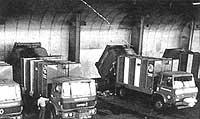Biogas: Net profit
1988/02/01 Jauregi, Mariaje - Elhuyar Fundazioa Iturria: Elhuyar aldizkaria
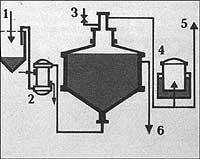
One of the methods of obtaining biogas in industrial plant.
- Cocaine for the collection of liquid waste.
- Heat exchanger: here the waste is heated to a certain temperature.
- Reactor, where organic substances are fermented.
- Cylindrical biogas storage and storage tank.
- Biogas output.
- Sludge exit. This is used both for the production of biological active substances and for fertilizers.
In the surroundings of these cities there is no longer room for the location of landfills and every time you have to take the garbage further. Waste is becoming gold and its transport and disposal has cost a lot.
In addition, it should be noted that waste producers are not only individual citizens, but also other companies collaborate in it.
It is true that many of these residues will spontaneously return to nature. But when? The natural rotation speed of the substances is very slow compared to the most technological process. In addition, if the waste is abandoned, it becomes polluting to the detriment of the environment.
Ideally, the company had previously planned the product direction. But even though science is trying to solve the problem, the issue remains complicated.
In the following lines we will try to solve the problem by one of the identified routes, the transformation of waste into biogas. It seems to be a very successful path.
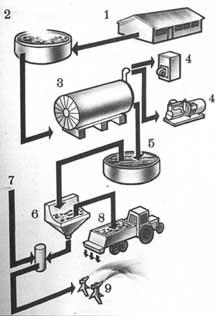
The scheme for the production of biogas and fertilizers from livestock waste is as follows:
- Livestock farming
- Liquid Manure Supply Tank
- Biogas reactor
- Gas generators. With them biogas is transformed into electric energy and heat energy.
- Liquid manure collection tank (mud) obtained.
- Sludge fattening.
- Water supply.
- Put the mud into the ground.
- Artificial rain in the fields.
It has been 200 years since flammable air or methane was discovered. This gas could be found anywhere where the breakdown of organic substances was produced without oxygen. The formation of methane in the mud of reservoirs, lakes, rivers, seas and waters of congestion is a biological process carried out thanks to anaerobic bacteria, that is, bacteria that live without oxygen.
But not only that. Developing this idea, it has been shown that this process of methanization of organic substances takes place also in the belly of the earth, so many of the natural gas deposits formed over the centuries were due to the vital activity of bacteria.
In the next step, theories about the biological origin of methane and the serious ecological problems tried to incorporate the researchers the idea of industrially developing methane with organic waste. Why not accelerate the mechanism of use of organic substances if the speeds of technological processes voluntarily performed by civilization are much greater than those of the natural rotation of substances? They would establish conditions for bacteria that could be comfortable and produce methane stronger than at the roots of the planet.
From this idea began to build the first facilities to obtain biogas and fertilizers from the waste generated in livestock. They have subsequently increased. At the same time other avenues of bioenergy began to break, such as organic, gas synthesis, artificial gasoline raw material, etc... However, the most appropriate solution was the path to biogas.
Methane production mechanism
Before analyzing the possibilities of using biogas, we will indicate a little the mechanism of methane production.
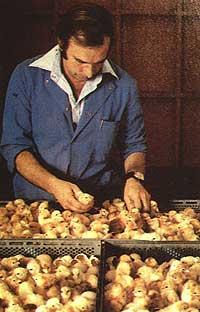
Biogas is produced as a consequence of the fermentation of organic substances, which is produced by the natural mixture of microorganisms in strictly anaerobic situations, in special reactors of 1 to 9 thousand m3. It is true that the residues charged in the reactors contain a certain amount of oxygen, but this will be immediately absorbed by bacteria called facultative anaerobias. These bacteria are able to develop into living gas or lead an anaerobic life without it.
The fermentation temperature is chosen depending on the waste and its contamination. If the waste is clean sanitary, the mesophilic regime (30-40°C) will be used. If they have dangerous microbes to remove, brelminto eggs, weed seeds, etc., or if the acceleration of the process is important, the regime to choose will be the thermophilic (55-60°C). At such high temperatures, the pathogenic microflora is delivered and the same process lasts between 5 and 10 days instead of 20.
In reactors, the organic substance crosses a complex path of transformation. The first biological polymers (proteins, fats, polysaccharides, nucleic acids and others) are hydrolyzed by specific groups of bacteria, due to the formation of simpler compounds (high molecular weight alcohols, organic acids, peptides, amino acids, etc. ).
For their part, they are fermented with acidifying bacteria that become volatile fatty acids, low molecular weight alcohols, hydrogen, carbonic gas, ammonia and hydrogen sulphides. These substances are subjected to a subsequent decomposition process, obtaining acetic and formal acid, hydrogen, carbon dioxide and acetogen microorganisms. Finally, methanogenic bacteria are responsible for the release of biogas, whose components are methane (70%) and carbon dioxide (30%).

The residues of livestock and poultry farms have for themselves a mixture of work of microorganisms. For its binary activity it is sufficient to select the pH (that is, the concentration of hydrogen ions) at the appropriate temperature for the decomposition of organic substances and the speed of arrival of the raw material to the reactor. For fermentation in reactors in other residues an additional crop mixture specially prepared for it is included. At the moment, the methanogenetic system is not sufficiently studied, but it works with reliability and it is possible to use practically all the organic substances of the landfill.
In the decomposition of organic substances not only biogas is formed, but also sludge with mineralized nitrogen, phosphorus, potassium, etc. is obtained. The sludge can be used as fertilizer.
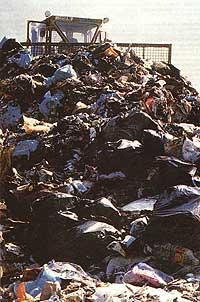
In biogas plants the sludge is obtained as a result of the production of sediments from urban fecal waters. In reactors, due to the temperature (50-55°C) it suffers a true sanitary purification, so it is able to use it in agriculture.
This technology has followed another line. 5% of the fermentation rate has been achieved. The fermented biomass part in the reactor is extracted and mixed with the raw material from the pipe. In addition, the decomposition of organic substances produced by microbes begins before it reaches the reactor. It has been achieved that the periodicity of the main process is five times lower, which has managed to reduce the volume of the reactors and the construction costs thereof.
But tests are also being done to speed up the process of metallic fermentation in another way. The knowledge of the species of anaerobic bacteria involved in the reaction will allow, through a targeted alternative, the obtaining of high activity vaccinal stocks. Its inclusion in the reactor will cause intense fermentation.
On the other hand, the decomposition reaction of acetic acid to methane has already been described. It is known that di-tricarboxylic acids (intermediate products of the breakdown of some species of organic substances) are strong catalysts in the synthesis of methane at the cellular level ( in vivo) in the methanogenetic union, which allows to accelerate one of the chains of metanization of organic substances, increase in 10 times the formation of biogas and increase the speed.
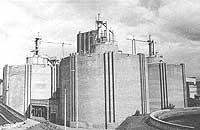
Modern technological methods for biogas production are calculated to use liquid waste with a humidity exceeding 85%. This obviously offers a great advantage, as the fermentation process is carried out uninterruptedly. But it is also true that there are more organic dry substances on Earth and, according to known technologies, a lot of water is needed to carry out these processes. For example, the production of 60 million tons of solid waste in our cities would require one billion m3 of water a year. And then they should be sprayed. However, progress is being made in the construction of technology to obtain biogas by fermentation of waste with 60% dry substance.
Another promising raw material is invention. Its world reserves are around 270 billion tons, or 100 billion m3 of biogas and organic mineral fertilizers.
Biogas can also be extracted from algae and halogilos specially cultivated for it in soil or in water. Industrial planting of this type of energy biomass can be done in marshes or reservoirs. According to the studies being carried out, every day 20 g of plants per m 2 of water surface can be collected during the summer vegetation period. In this way, 24 t of biomass per hectare can be obtained at the end of summer. After its elaboration in reactors, it will provide 12 thousand m 3 of gas, equivalent to 10-12 tons of conventional fuels.
Support for oil farms
Currently, the world oil reserves explored reach 200 billion tons. Modern methods for their production are capable of reaching only 40-50%, that is, 100 billion tons will remain unused. To take advantage of this path, studies are also being carried out in the creation of biotechnology for the gasification of residual oil. The objective is to transform the gasification of residual oil into biogas with the help of methanoforming bacteria and extract it to the outside.
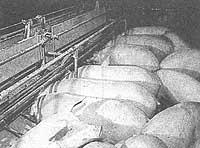
The practical use of these studied processes will contribute to the more intensive development of the biogas industry.
Conclusion
As we have seen, the organic waste generated in our houses, factories and hamlets (food remains, stubble, pigs, pigs,...) can have a very appreciable use. Until now these residues were lost in landfills and often became food for rats and insects that are carriers and transmitters of polluting diseases. The methanization of organic waste, that is, its transformation into gas, can be an important source of renewable energy in the short term.

Gai honi buruzko eduki gehiago
Elhuyarrek garatutako teknologia




